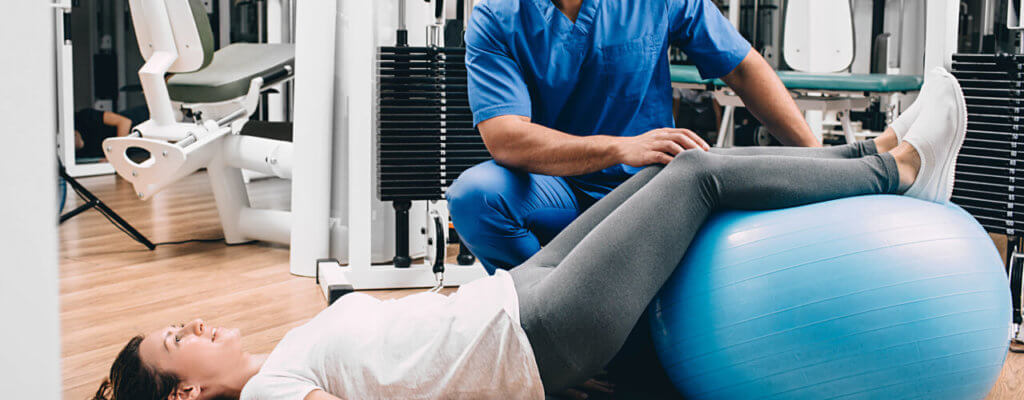In-Home Physical Therapy Can Enhance Your Overall Health!
Did you know that physical therapy (or “PT”) can improve the overall physical health of people struggling with injuries, illnesses, and medical conditions? It’s true! An individualized in-home physical therapy program is a conservative approach to managing these types of problems.
Physical therapy can not only assess and address your pain symptoms, it can also enhance your quality of life. To learn more about the benefits of physical therapy, keep reading!
How do we know physical therapy actually works?
There is a vast amount of research that has been done to support the benefits of physical therapy for health conditions like osteoporosis. Osteoporosis is one of the ten most common illnesses. During a clinical study, patients were recruited from the osteoporosis outpatient clinics of Klinikum Südstadt hospital and the University hospital of Rostock to engage in physical therapy for osteoporosis.
Over a period of 3 months, 44 patients with osteoporosis completed a twice-weekly 30-minute intensive exercise program. The conclusion was that physical therapy reduced pain and improved function, with the sling exercise patients benefiting most. This study is just one of the many proving the health benefits of physical therapy.
The combination of functional improvement and pain mitigation resulted in overall improved health. There are tons of ways physical therapy can benefit you!
6 ways physical therapy can benefit you
1. Provides pain relief
One of the most obvious benefits of physical therapy is pain relief. There are many different kinds of treatment available. Manual therapy treatments like soft tissue mobilization, ultrasound, electric stimulation and targeted exercises help relieve pain and restore joint and muscle function. These types of methods also help prevent pain from coming back in the future.
2. Aids with age related degenerative conditions
The chances of developing osteoporosis or arthritis are increased as we age. A physical therapist is a trained expert at helping patients recover and manage age-related health problems like osteoporosis and arthritis.
3. Improved mobility
Physical therapy improves mobility with both passive and active treatments. Muscles are strengthened and flexibility is greatly improved. This way you can engage in activities and lead a healthy lifestyle.
4. Fall prevention and balance rehab
With physical therapy, a physical therapist will screen your risk for falling. Exercises will be given to improve your balance in real-life situations. Assistive devices will be given to ensure safe walking, and if you have a problem with your vestibular system, a physical therapist will perform specific methods to reduce or eliminate the symptoms of vertigo and dizziness.
5. Possibility of avoiding costly operations
When physical therapy works to heal and reduce pain, the need for surgery decreases drastically. According to Choose PT, for some conditions, including meniscal tears and knee osteoarthritis, treatment by a PT has been found to be as effective as surgery.
6. Lowered risk of heart and lung disease
Physical therapy is a component of cardiac rehabilitation. To address pulmonary issues, a physical therapist will help improve your health and quality of life through breathing, strengthening and conditioning exercises. Physical therapy also helps clear fluid from the lungs.
What is the difference between passive physical therapy and active physical therapy?
Passive therapy
Passive treatments work to manage pain. The purpose of passive physical therapy is to help manage and alleviate pain, so you can carry on with your normal daily routine.
If your pain is eliminated first, the rest of your treatment program will be much smoother. Passive treatments are done first so you can focus on regaining your strength and function later on in your treatment plan.
Passive physical therapy can include any combination of these specialty treatments, including heat and ice therapy, manual therapy, ultrasound, or dry needling. Your physical therapist will decide which ones are best for your condition.
Active therapy
The purpose of active therapy treatments is to provide exercises that the patient can do on their own in the later stages of their physical therapy treatment plan. In fact, many active physical therapy treatments are designed so the patient can perform them independently at home, after their PT sessions are over.
Active therapy focuses on targeted exercises and stretches in order to improve function in the affected area. Once your pain or discomfort subsided enough that your physical therapist believes you are ready for active physical therapy, he or she will set up an exercise plan that is specific to your needs.
The exercises prescribed in an active treatment plan are aimed at helping you gain back your flexibility, range of motion, and muscle strength. These exercises will help provide support to the painful area and will guide you further in your recovery process.
Ready to learn more about the benefits of PT?
All around, physical therapy (PT) is designed to improve your health and help you engage in your regular activities. With our in-home physical therapy services, you will receive an individualized treatment plan to address your specific challenges, needs, and goals. A physical therapist can help you manage your pain, improve chronic conditions, recover from an injury, and prevent future chronic diseases – all from the comfort of your own home.
Our physical therapists can also collaborate with other health professionals to ensure that you get the best plan of care. Patients are encouraged to be active participants in their treatment plan. We can help you accomplish your goals by coming to you and working around your schedule!
Sources:
Tags: aches and pains, healthy tips, Physical Health, fitness, physical therapist, physical fitness, physical therapy, physical activity, health, health and wellness, On the Go (OTG) Therapy Services



